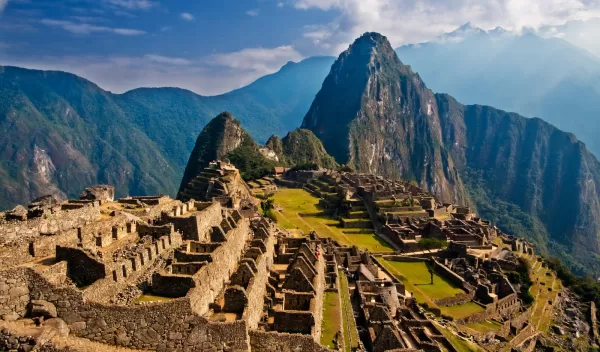
Ancient DNA reveals diverse community in 'Lost City of the Incas'
Who lived at Machu Picchu at its height? A study published in Science Advances used ancient DNA to find out where workers buried more than 500 years ago came from in the lost Inca Empire.
A team of U.S. National Science Foundation-supported researchers from Yale, the Universidad Nacional de San Antonio Abad del Cusco, the University of California, Santa Cruz, Tulane University, the Max Planck Institute for Evolutionary Anthropology and other institutions performed genetic testing on individuals buried at Machu Picchu to learn more about the people who once lived and worked there. The research was performed under an agreement to return artifacts and human remains from a collection at Yale to Peru for exhibition, conservation and study.
Machu Picchu is in the Cusco region of Peru. It is one of the best-known archaeological sites in the world and attracts hundreds of thousands of visitors every year. It was once part of a royal estate of the Inca Empire.
Like other such estates, Machu Picchu was home not only to royalty but to attendants and workers, many of whom lived there year-round. These residents did not necessarily come from the local area, though it is only through this study that researchers have been able to confirm, with DNA evidence, the diversity of their backgrounds.
The DNA analysis works in much the same way that modern genetic ancestry kits work. The researchers compared the DNA of 34 individuals buried at Machu Picchu with that of individuals from other places in the Inca Empire, and with modern genomes from South America, to see how closely related they might be.
The results showed that individuals at Machu Picchu had come from throughout the Inca Empire, some from as far away as Amazonia. Few shared DNA with each other, showing that they had arrived at Machu Picchu as individuals rather than as part of a family or community group.
This DNA analysis supports historical documentation and archaeological studies of the artifacts found with the burials. "It gives us a unique insight into the life of a diverse community of individuals and their families who were subject to Inca forced relocation and resettlement policies," said co-corresponding author Lars Fehren-Schmitz.
The study is part of a larger effort to combine traditional archaeological techniques with new technologies and scientific analyses. The combination of fields leads to a more complete understanding of discoveries, the researchers said.
